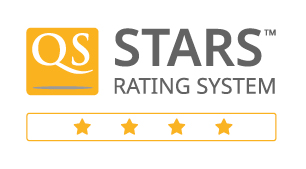To help contribute to APU’s vision for human resource development (APU2030: People who study at APU will be able to change the world) the Japanese Program aims to (1) give students the Japanese proficiency they need for various situations from daily life to studies in specialized fields, (2) Intercultural competence necessary for effective collaboration with others, and (3) autonomous learning skills necessary for deepening and broadening one’s learning, and for continuing to learn effectively. In addition, each course makes use of a variety of learning resources as well as pair work and group work that take advantage of APU’s multicultural environment to help develop these skills in a practical way.
The courses above are offered to help respond to the varying Japanese proficiency levels and Japanese study needs of APU students. English-basis students take a placement test just after enrollment to ensure they start their studies at the appropriate level (01 – 07 as shown in Fig. 1). For example, a student who has never studied Japanese before might start at Foundation I, II (Fig.1, 01 Level). In addition, courses up to the Intermediate level are required to ensure students gain the Japanese skills required to handle situations in daily life. After completing Intermediate, students can choose to register for other courses depending on their own proficiency level or goals. If students start at the lowest level, they will be able to take the highest level courses including Career Japanese, Language and Culture in Japan, Japanese Language Teaching, etc. in their 6th semester at the earliest. If students continue their studies to this level, they will be able to use Japanese in a wide range of situations including academic activities, job hunting, and so on.
The Japanese Program also offers courses for Japanese-basis international students. However, these students can only register for the 07 level courses shown in Fig. 1 above.
In addition, students who study Japanese are able to use the SALC to support their learning. The SALC not only provides various learning materials, but also offers individual tutors sessions and holds exchange events. Students can use these resources and services to work toward their own learning goals.









